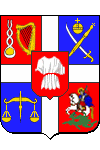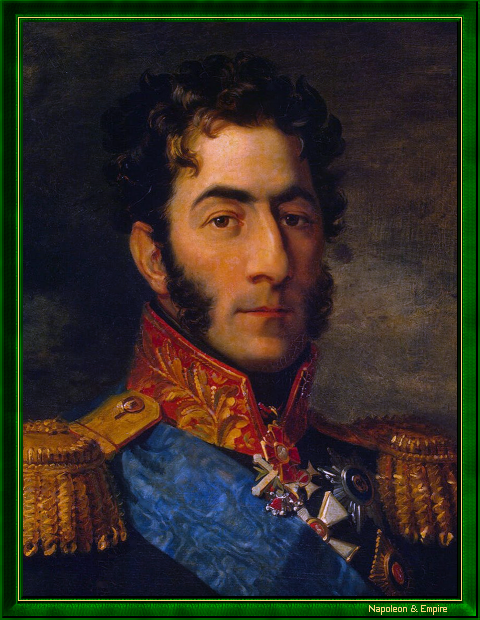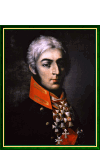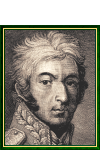Pyotr Ivanovich Bagration
Prince

Prince Piotr Ivanovitch Bagration (Пётр Иванович Багратион) was born in 1765 in Kizliar, Dagestan (other sources place his birth in Georgia), to an illustrious family − the Bagratids − who had long ruled Georgia.
He began his military career in the Russian army in 1782 as a sergeant, taking part in the siege of Ochakov in 1788, then fighting in 1792 and 1794 under the command of General Alexander Vasilyevich Suvorov (Генерал-фельдмаршал Алекса́ндр Васи́льевич Суво́ров) in Poland, where he earned the rank of colonel. In 1799, he fought in Switzerland and Italy, still under Suvorov, who considered him his "right-hand man", capturing Brescia, defeating Jean Mathieu Philibert Sérurier at Lecco on April 26, pushing back Jean-Victor Marie Moreau at Cassano the following day, and victoriously commanding the vanguard of Austro-Russian forces at Trebbia (June 17-19, 1799) against Etienne Macdonald's troops.
He shared Suvorov's disgrace under Paul I (Павел I Петрович Романов), but was recalled in 1805 by Emperor Alexander I (Александр I Павлович Романов) of Russia, and commanded an army corps in Moravia under Mikhail Illarionovich Golenichev-Kutuzov (Михаил Илларионович Голенищев-Кутузов). Encircled with 7,300 men at Hollabrunn on November 16, 1805 by Joachim Murat and Jean-de-Dieu Soult at the head of more than 20,000 men, Bagration refused to surrender and managed to get through, at the cost of heavy losses.
Now a lieutenant-general, he fought at Austerlitz on December 2, 1805, then at Preußisch Eylau, Heilsberg and Friedland in 1807.
In June 1807, he took part in the talks with Murat that led to the signing of the Treaty of Tilsit.
The four years of peace between Russia and France saw him fight against the Swedes in Finland, then the Ottomans at the battles of Rassowa and Tataritza.
In 1809 he was promoted to General of Infantry.
In 1812, Napoleon 1st took the initiative to invade Russia. Bagration, leading the left wing of the Tsar's army, was defeated at Mohilev on July 23, but managed to avoid encirclement and joined the troops of Michael Barclay de Tolly (Михаи́л Богда́нович Баркла́й-де-То́лли) at Smolensk [Смоленск]. He then fought at Volontina, and finally at Borodino [Бородино] on September 7, where he bore the brunt of the French attack and held out valiantly before being seriously wounded in the middle of the day. Transported to Moscow and then evacuated to Sima when the French overran the capital, he died on September 24 (September 12 according to the Julian calendar).
"Prince Pyotr Ivanovich Bagration", by George Dawe (St James's, Westminster 1781 - Kentish Town 1829).

A monument to Prince Peter of Bagration was erected under Nicholas I (Николай Павлович Романов) on the Borodino battlefield, and the general's ashes were transferred there; the tomb was damaged during the Second World War, and had to be restored.
In honor of the prince, Joseph Vissarionovich Stalin − a Georgian like himself − named Operation Bagration the Soviet counter-offensive of June 22, 1944, during Word War II, which pushed German forces out of Belarus. After the war, the Soviets annexed northern East Prussia, and the town of Preußisch Eylau (site of the 1807 battle) has since been named Bagrationovsk.
Unless otherwise stated, all dates on this page are in the Gregorian calendar (then twelve days ahead of the Julian calendar in use in Russia at the time).
Other portraits

"Prince Pyotr Bagration". Russian school of the nineteenth century.

"Prince Pyotr Bagration". Print by Salvator Cardelli (?-?).